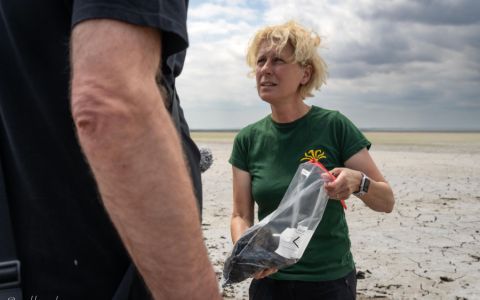The new Arnika’s study reveals the widespread presence of harmful substances in daily used plastic products such as reusable coffee cups and water bottles. These substances, which can leach from plastics, are known for their ability to negatively affect fertility and prenatal development in children. They pose risks to human health and the environment, while majority of them are not currently regulated.
All 31 samples included in this survey were purchased on the Czech market, in two rounds – 10 products from hobby markets and children reusable plastic food containers were purchased in April 2022, plastic food packaging and reusable drink cups were purchased in August and September 2023. Seven products were collected during household audits and had been used for several years. All were tested for the presence of six different benzotriazole UV stabilizers (BUVs): UV-P, UV-234, UV-326, UV-327, UV-328, UV-329, with the second round of samples from 2023 additionally tested for UV-350. Analyses were conducted in the certified laboratory of the Institute of Food Analysis and Nutrition at the University of Chemistry and Technology in Prague.
At least one of the UV stabilizers was found in 17 out of 31 (55 %) tested plastic products including plastic flower pot, small gardening tools, flower sprayer, pool chemical container, bathroom cup, children's plastic utensils, 5 out of 6 food containers, 4 out of 5 reusable coffee cups, and 2 out of 3 reusable water bottles - products that people come into daily contact with. The highest concentrations of UV stabilizers were found in small plastic gardening tools purchased in 2022, where all the tested UV stabilizers were identified with a total concentration of 2125 ng/g. You can view the results in detail in a table attached to the end of the article, or download the whole study in Czech HERE.
“The most frequently detected UV stabilizers in the sampled products were those listed as Substances of Very High Concern in the candidate list of the European REACH legislation. They are classified as persistent and bio-accumulative substances, as they accumulate in living organisms, including humans. Another stabilizer UV-328 is banned via Stockholm Convention on Persistent Organic Pollutants, meaning it is targeted for global elimination and world governments are obliged to take legislative action to end its production and use. Our study highlights the fact that many plastics are chemical mixtures containing various problematic substances and deserving attention due to the risks they pose to human health," explains the study's author, Jitka Straková.
The research revealed that 17 out of 31 tested products contained UV stabilizers known for their risks to health and the environment.
UV stabilizers are added to plastics to prevent the degradation caused by ultraviolet (UV) radiation from the sun, such as discoloration or fading. They were found in plastic products including flower pots, children's utensils, food containers, and travel mugs. At the same time, they act as endocrine disruptors, adversely affecting fertility and prenatal development in children."
UV stabilizers are not directly bound into the structure of plastics and are easily released from plastic products. Several of them have been widely used over the decades, as evidenced by studies finding them in environmental samples - wastewater, natural water bodies, soil, aquatic organisms, air, household dust, and even in breast milk.
"The process of banning these substances, both in food packaging and generally in consumer products via REACH regulation (Registration, Evaluation and Authorization of Chemicals), is slow and inefficient," says Arnika's expert on harmful substances in consumer products, Karolína Brabcová, while adding, "the process only addresses individual substances and does not consider how these substances react in mixtures. Given they contaminate our food and even our bodies, it is high time to ban them as a group. They are not essential to the performance of materials such as food packaging which is usually used for a few days and is not exposed to sunlight."
The study emphasizes the need for adopting a globally binding Plastics Treaty to address the growing problem of plastic pollution as well as the presence toxic substances in plastics. The study authors recommend:
1. Adopt an international Plastics Treaty to address the growing problem of plastic pollution, including pollution with toxic chemical substances.
2. Promote safer, sustainable materials for non-toxic circular economies and eliminate the use of non-essential plastics.
3. Ban toxic chemicals, including those affecting the hormonal system, in plastics. This is crucial to prevent health and environmental harm throughout the entire life cycle of plastics, from production to disposal or recycling.
4. Prohibit the recycling of plastics containing toxic chemicals.
5. Ban the export of problematic plastic waste to developing countries.
6. Plastic producers industries must bear the costs of all impacts on human health, society, and the environment caused by the production, use, dumping, import, and export of plastics.
7. Plastic producers are to be required to provide full transparency on the chemicals used in plastics production and plastic ingredients should be publicly available and communicated throughout the supply chain via labelling, safety data sheets, and databases.
Arnika works toward reducing plastic pollution and banning toxic substances for years via European legislation as well as international legal instruments. Our goal is to ban substances with similar chemical structures and toxic profiles via a grouping approach immediately in consumer products and after evaluating their essentiality in professional use. Take action and sign a petition for Toxics-free Europe now: Toxic-free Europe now! | WeMove Europe!
(For more information, please contact Arnika’s international communication officer Jan Kašpárek, This email address is being protected from spambots. You need JavaScript enabled to view it.)
This text has been produced with the financial support of the EU LIFE Programme (LIFE21-GIE-DE-LIFEChemBee/101074245). Views and opinions expressed are however those of the author(s) only and do not necessarily reflect those of the European Union or the LIFE Programme. Neither the European Union nor the granting authority can be held responsible for them.








